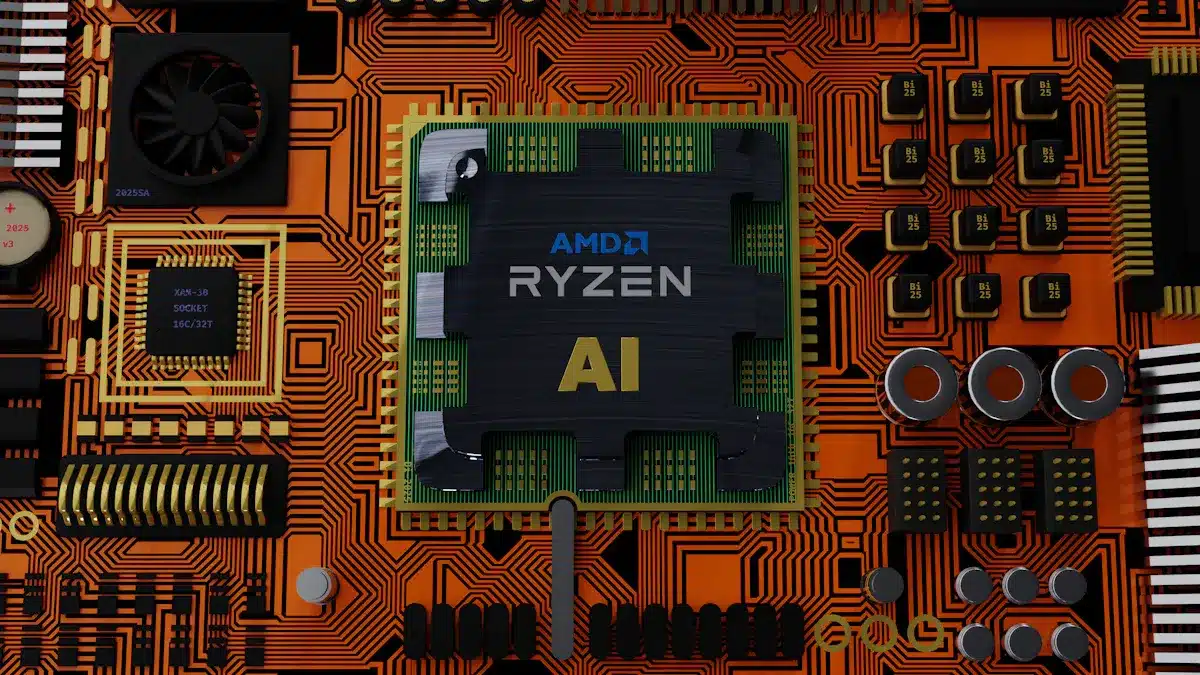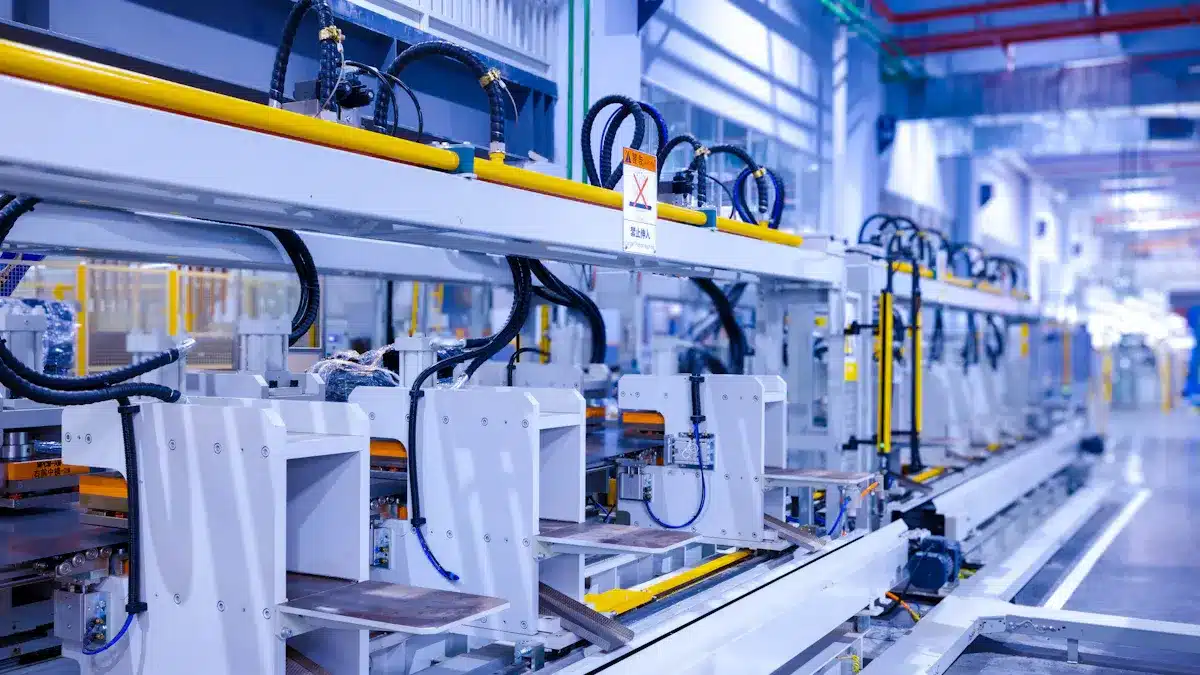
Choosing the right circuit board making machine is very important. It affects how well you produce and the quality of your products. In 2023, the global PCB manufacturing equipment market was worth USD 4.2 billion. It is expected to grow by 6.2% each year from 2024 to 2032. This growth shows that more people want high-quality circuit board making machines. Buying better equipment can speed up production by 30%. It can also make operations run smoother and lower defect rates. This is very important for industries like medical and aerospace. In these fields, precision and reliability are essential.
Key Takeaways
Picking the right PCB manufacturing machine helps speed up production and improve product quality. Better machines can boost efficiency by 30%.
Accuracy is very important in PCB manufacturing. Following IPC standards cuts down mistakes and makes sure products are reliable, especially in important fields like aerospace and healthcare.
Think about important factors when choosing a machine, like scalability, quality management, and customer support. These things help make sure the machine fits your production needs.
Modern PCB machines often use eco-friendly materials and save energy. Buying these machines helps the environment while making production better.
Stay ahead by learning about the different types of PCB machines. Check their features, costs, and abilities to find the best one for your projects.
Overview of PCB Manufacturing

Importance of Precision
Precision is very important in PCB manufacturing. High-quality circuit boards need exact measurements and careful detail. When you focus on precision, you lower the chance of defects. This matters a lot in fields like aerospace and healthcare. Even small mistakes can cause big problems.
Think about these points regarding precision in PCB manufacturing:
IPC standards help ensure quality, which is key for precision.
These standards lower failure rates, which is vital for high-precision needs.
They help design complex layouts, keeping spacing and tolerances steady.
By following these standards, you can improve your product’s reliability and stay competitive in the market.
Key Factors to Consider
When picking a PCB board manufacturing machine, many factors matter. You should look at these things to choose the right equipment for you:
Project Scalability: Check if the machine can manage your production amount.
Types of PCBs: Make sure the manufacturer offers the specific PCBs you need.
Quality Management System (QMS): Review the manufacturer’s QMS to ensure quality stays consistent.
Track Record: Look at the manufacturer’s history for timely delivery.
Customer Support: Good customer support is important for fixing any problems.
Also, think about the skills and abilities of the manufacturer. Their facilities and equipment should meet industry standards, like ISO 9001. By focusing on these factors, you can make a smart choice that fits your production goals.
Here’s a brief overview of the main stages involved in the PCB manufacturing process:
Stage Number | Stage Name | Description |
|---|---|---|
1 | Etching | Removing extra copper from the PCB panel with a temporary mask, leaving the needed copper traces. |
2 | Stripping | Taking off leftover copper covered by tin/lead, creating a clear copper outline. |
3 | Solder Resist | Putting on solder resist material to stop solder from making unwanted connections. |
4 | PCB Testing | Testing the PCB’s functionality with advanced equipment to make sure it works correctly. |
5 | PCB Assembling | Placing electronic parts onto the PCB using through-hole or surface mount technology. |
By knowing these stages and the importance of precision, you can better understand the challenges of PCB manufacturing.
Top Circuit Board Making Machines

Nano Dimension DragonFly 2020
The Nano Dimension DragonFly 2020 is a special pcb prototyping machine. It uses 3D printing and advanced materials to make high-quality printed circuit boards (PCBs).
Features and Applications
Here are some important features of the DragonFly 2020:
Feature | Description |
|---|---|
Printing Technology | Uses 3D printing with metal and polymers to create PCBs. |
Materials Used | Works with dielectric resins and electrically conductive nanoinks. |
Capabilities | Allows quick testing and retesting of different circuit board shapes and designs. |
Software | Operated by special software that uses Gerber design files for accurate printing. |
Environmental Impact | Provides a more eco-friendly choice than regular manufacturing. |
Prototyping Speed | Can print multilayer PCBs in just a few hours without needing extra changes. |
Design Flexibility | Lets you try out many different circuit board designs. |
The DragonFly 2020 is great for industries like consumer electronics, medical devices, and automotive. It allows very fast prototyping, cutting down design and test times from months to days. This helps you check design options cheaply while keeping important ideas safe.
Ideal Use Cases
You will find the DragonFly 2020 useful in many situations:
Making multilayer PCB features, including connections
Keeping important design details private
Quick production of professional multilayer PCB prototypes and test circuits
LPKF Prototyping Machines
LPKF has a variety of pcb board manufacturing machines known for their accuracy and speed. These machines are great for making high-quality prototypes quickly.
Features and Applications
Feature | Other PCB Equipment | |
|---|---|---|
Precision | Very precise with traces smaller than 1 mil (25 µm) | Varies, often not as precise |
Substrate Handling | Can work with laminated substrates and ceramics | Limited to regular PCB materials |
Trace Creation | Can create fine traces and microvias | Usually not as advanced |
Processing Speed | Special hatch and delamination process saves time | Slower processing times |
LPKF machines are perfect for PCB prototyping, flexible circuit boards, and parts in many applications, like LED lighting and wearable tech. They help engineers move quickly from design to prototype, allowing fast changes.
Ideal Use Cases
You can use LPKF machines for:
PCB prototyping
Flexible circuit boards
Parts in keyboards
Different sensors, like motion controls and drug delivery sensors
V-One PCB Printer by Voltera
The V-One PCB Printer by Voltera is a small desktop pcb printer made for fast in-house creation of printed circuit boards.
Features and Applications
Feature | Specification |
|---|---|
Dimensions | 390 X 257 X 207 mm |
Weight (Net) | 7 kg |
Connectivity | Wired USB 2.0 |
Electrical | 12V, 25W |
Min Passive Size | 1005 |
Min Pin-to-Pin Pitch | 0.5 mm |
Heated Bed Temperature | 240°C (max) |
Operating System | Windows 7, 8, 10 (64bit), OSX 10.11 + |
The V-One lets you print conductive ink to make traces and pads, drill holes for through-hole parts, and apply solder paste without stencils. It has a built-in reflow feature, making it easy to assemble PCBs right on the printer.
Ideal Use Cases
The V-One is great for:
Fast prototyping of electronics
Small-batch production
Schools for hands-on learning
SMT Machines by Major Manufacturers
Many companies lead the market with their pcb assembly machines. Here are some well-known models:
Panasonic (Japan): AM100 and NPM series
Yamaha Motor IM (Japan): YSM series
Fuji Corporation (Japan): NXT and AIMEX series
ASMPT (Singapore): SIPLACE line
Juki (Japan): RS-2 and FX series
Features and Applications
Feature/Advancement | Description |
|---|---|
Smart feeders use RFID technology for quick identification and automatic reel swaps. | |
Real-Time Data Analytics | Machines collect data and provide dashboards for yield rates and maintenance predictions. |
High-Resolution Vision Systems | Advanced vision systems ensure accurate component placement. |
These machines are good for high-volume PCB production in fields like automotive electronics, medical devices, and consumer electronics.
Ideal Use Cases
You can use SMT machines for:
Automotive Electronics
Medical Devices
Communication Devices
Gaming Consoles
Wearable Technology
Comparison of PCB Board Manufacturing Machines
When you look at different PCB board manufacturing machines, you need to think about some important things. These things help you pick the right machine for what you need. Here are the main factors to remember:
Specialization: Different makers focus on different types of PCBs. Pick one that matches your product’s needs.
Quality Standards: Check for certifications like ISO 9001 and RoHS compliance to make sure they are reliable.
Production Volume: Know if you need to make a lot of products or just a few.
Lead Times: Look for makers who can work quickly if speed is important.
Technological Capabilities: Make sure the maker can handle advanced needs like HDI and microvias.
Support and Communication: Good customer service and engineering help are very important for product development.
To help you see the differences between the top machines, here’s a comparison table showing their starting costs, maintenance needs, and running costs:
Machine Type | Initial Cost | Maintenance Needs | Operational Costs |
|---|---|---|---|
Entry-Level Pick and Place | $5,000 – $30,000 | Basic maintenance, manual adjustments | Lower ongoing costs, good for low volume |
Mid-Range Pick and Place | $30,000 – $150,000 | Moderate maintenance, more automated features | Moderate ongoing costs, flexible for different jobs |
High-End Pick and Place | $150,000 – $500,000+ | High maintenance, advanced automation | Higher ongoing costs, made for high-volume production |
Batch Reflow Oven | Lower initial cost | More manual work needed | Lower running costs, good for smaller runs |
Continuous Conveyor Oven | Higher initial cost | Less manual work, more automation | Higher running costs, made for larger production runs |
You should also think about why one machine might be better than another. Here are some common reasons:
Integrated services for PCB making and assembly are liked for their efficiency and easier management.
Fast delivery options, like 24-hour sample making, are very important for many customers.
The ability to manage flexible delivery dates and respond quickly is a big reason for choosing a supplier.
By knowing these comparisons and factors, you can make a smart choice when picking a PCB board manufacturing machine that fits your needs best.
Choosing the right PCB manufacturing machine is very important for your success. You need to think about precision, scalability, and quality standards. Talking to industry experts can give you helpful advice on choosing materials and fabrication methods.
Here are some good practices to follow:
Check project timelines to make sure you deliver on time.
Confirm manufacturer certifications, like ISO 9001.
Learn about the manufacturer’s quality control steps.
Buying advanced machines not only improves production speed but also helps with sustainability. These machines often use eco-friendly materials and save energy, which lowers environmental harm. By making smart choices, you can improve your PCB assembly process and stay competitive in the market.
FAQ
What is a PCB?
A PCB, or printed circuit board, is a board that connects electronic parts. It has paths made of conductive tracks. These paths help devices work correctly.
How do I choose the right PCB machine?
Think about things like how many you need to make, what types of PCBs you want, how precise you need them to be, and your budget. Look at your needs to find the best machine for your projects.
What are the benefits of using advanced PCB machines?
Advanced machines make production faster, improve precision, and lower defect rates. They often use eco-friendly materials, which helps with sustainability in manufacturing.
Can I prototype PCBs at home?
Yes! You can use desktop PCB printers, like the V-One by Voltera, to make prototypes at home. They let you test and change your designs quickly.
How do I maintain my PCB manufacturing machine?
Keep the machine clean, check for any damage, and follow the maintenance schedule from the manufacturer. Taking care of it helps it work well and last longer.
See Also
Emerging Innovations in PCB and PCBA Design Processes
Streamlined PCBA Solutions for Quick Electronics Development
Benefits and Obstacles of Flexible PCBA in Electronics
The Importance of Tailored PCBA Production in Electronics
Choosing Advanced PCBA Manufacturing Services for Your Needs